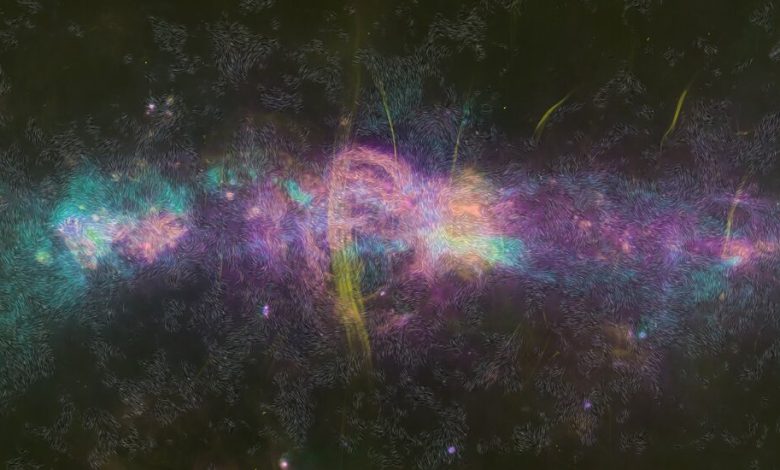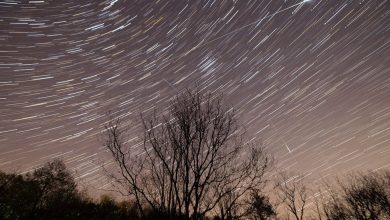The Dusty Magnets of the Milky Way






Every new generation of eyes sees a new version of our galaxy, the Milky Way.
This Impressionistic swirl of color represents the churning magnetic fields in giant dust clouds near the center of the galaxy.
The map, painted in infrared wavelengths, reveals new details in a stretch of our galactic home 500 light-years wide.
The colors represent different temperatures of interstellar dust. Cool, dense dust is green; warmer dust is pink. The magnetic field lines, showing the direction of force, were undetectable before now.
The map is a first step toward understanding how magnetism can shape the universe.
Out There
The Dusty Magnets of
the Milky Way
By Dennis Overbye
April 19, 2024
“The nation that controls magnetism will control the universe.” So maintained Dick Tracy, the fictional detective in the comic strip by Chester Gould, in 1962.
But does magnetism control the universe, too?
About seven stars are born each year in the Milky Way, our home galaxy. They come from dust and to dust they eventually return. Now, a celestial image, an Impressionistic swirl of color in the center of the Milky Way, represents a first step toward understanding the role of those magnetic fields in the cycle of stellar death and rebirth.
The image was produced by David Chuss, a physicist at Vanderbilt University in Nashville, and an international team of astronomers. The project is known as FIREPLACE, for Far-InfraRed Polarimetric Large Area CMZ Exploration. The team’s map reveals previously invisible details in a stretch of the central Milky Way 500 light-years wide.
The colors represent different temperatures of interstellar dust: Green indicates cool, dense dust; pink indicates warmer dust. Threaded through these hues are lines showing the directions of magnetic force in the clouds. The yellow streaks are jets of hot ionized gas, which emits radio waves. The jets were first recorded two years ago by the MeerKAT radio telescope in South Africa.
Every new generation of eyes sees a new version of our galaxy.
To map the galaxy’s magnetic field lines, Dr. Chuss and his colleagues flew at 45,000 feet aboard the Stratospheric Observatory for Infrared Astronomy, or SOFIA, a 747 outfitted for astronomy. A special spectrograph measured the direction of polarization of the infrared light emanating from the dust, revealing the directions of the magnetic fields point by point.
The center of the Milky Way is barely noticeable to the right of center in the map, just below a small blob that resembles a sideways figure eight. At the middle of the dusty blob is a monster black hole, around which the entire galaxy rotates like a carousel.
“The next step is to figure out what this all means,” Dr. Chuss said in an interview. Embedded in this map could be clues to some of nature’s deepest, most complex processes, including how stars, the sources of all light and life in the universe, come to be.
“It will provide the ability for new theories to be tested,” Dr. Chuss said, “and guide the development of the next generation of astronomical exploration.”
Produced by Antonio de Luca and Elijah Walker.
Image: Villanova University/Paré, Karpovich, Chuss (PI).



